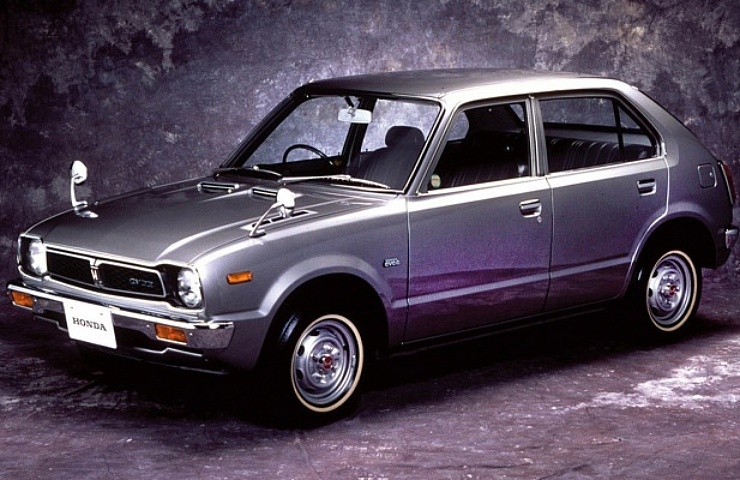Contents
There are now 10 generations of the Honda Civic—with an 11th model in the works. The Civic spans nearly 50 years. After all that time, one thing is clear: Civic owners appreciate value over fads.
Competitors have come and gone. But the modest-but-mighty Civic continues to provide faithful service to its owners—earning new devotees every day.
The Rise of the Honda Civic
The Civic was not the first Honda car sold in the United States. The tiny Honda N600 reached our shores first. Honda’s 600cc wonder debuted in 1969. At that time, the small, practical car—built to battle the VW Beetle—was sold exclusively at Honda motorcycle shops.
The N600 was too small to appeal to many Americans. Four years later, the Civic arrived—along with honest-to-goodness Honda car dealerships. So the N600 faded away.
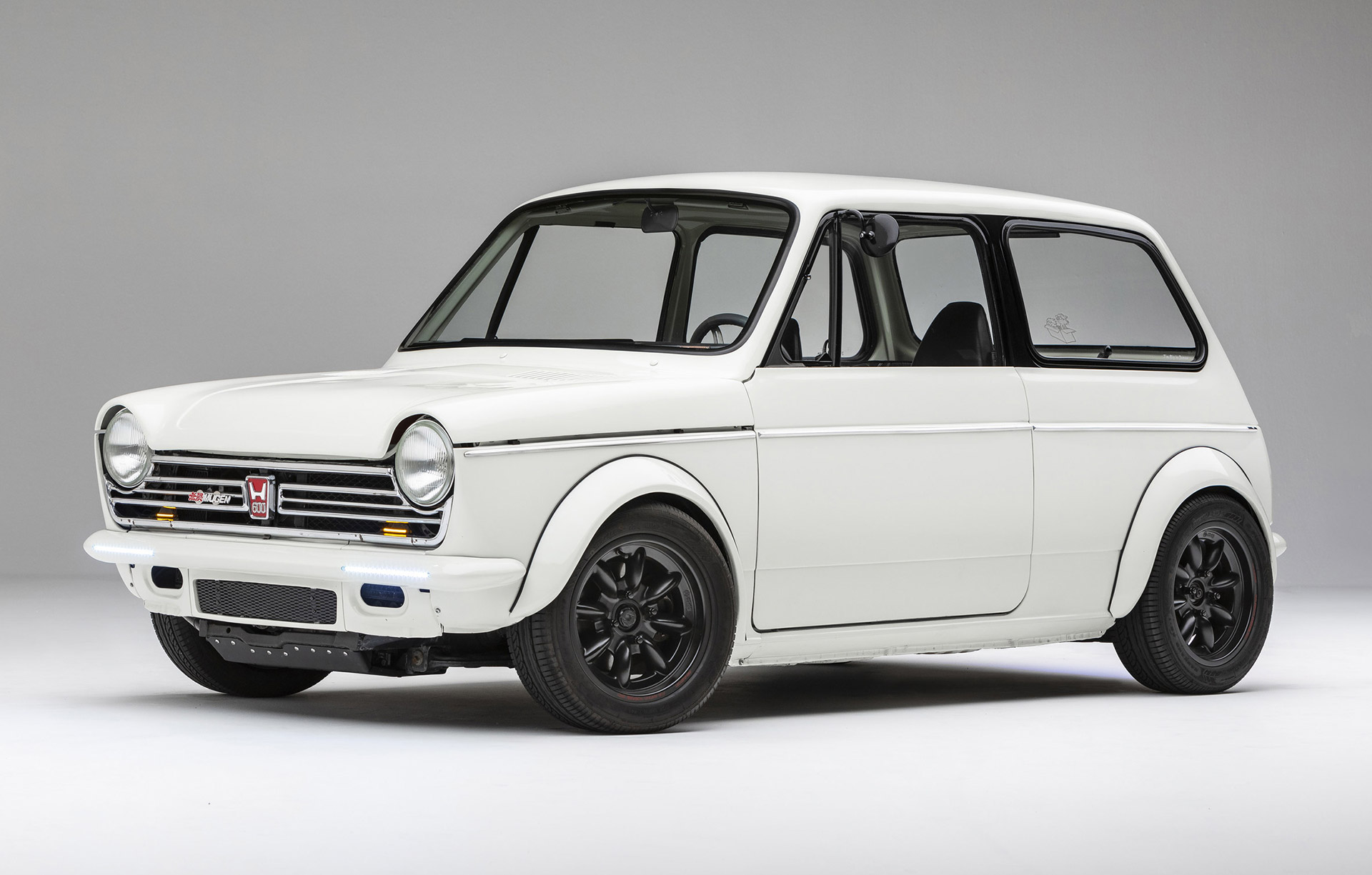
A 1972 Honda N600 custom tuned by the company in 2019.
With the Civic, Honda engineers sought to build what they described like this:
A world-class car that is light, quick, and compact.
The rear-wheel-drive, rear-engine Volkswagen Beetle was “the People’s Car.” But the front-wheel-drive, front-engine Civic was “created for citizens and cities.”
Form followed function in the early Civics, with a trapezoidal two-box design. It was small but provided ample interior space—gained through a four-wheel independent strut suspension system.
The first six Honda Civic generations classify as subcompact cars. But it’s been a compact (minus the “sub”) since 2001. It was the entry-level car in Honda’s lineup until the Fit arrived in the US in 2007.
The Civic is all about bang for the buck. Lively four-cylinder engines provide a balance of responsiveness and efficiency. Well-engineered suspension systems result in crisp handling. And a wide array of trim levels offer something for everyone.
First-Generation Honda Civic (1973-1979)
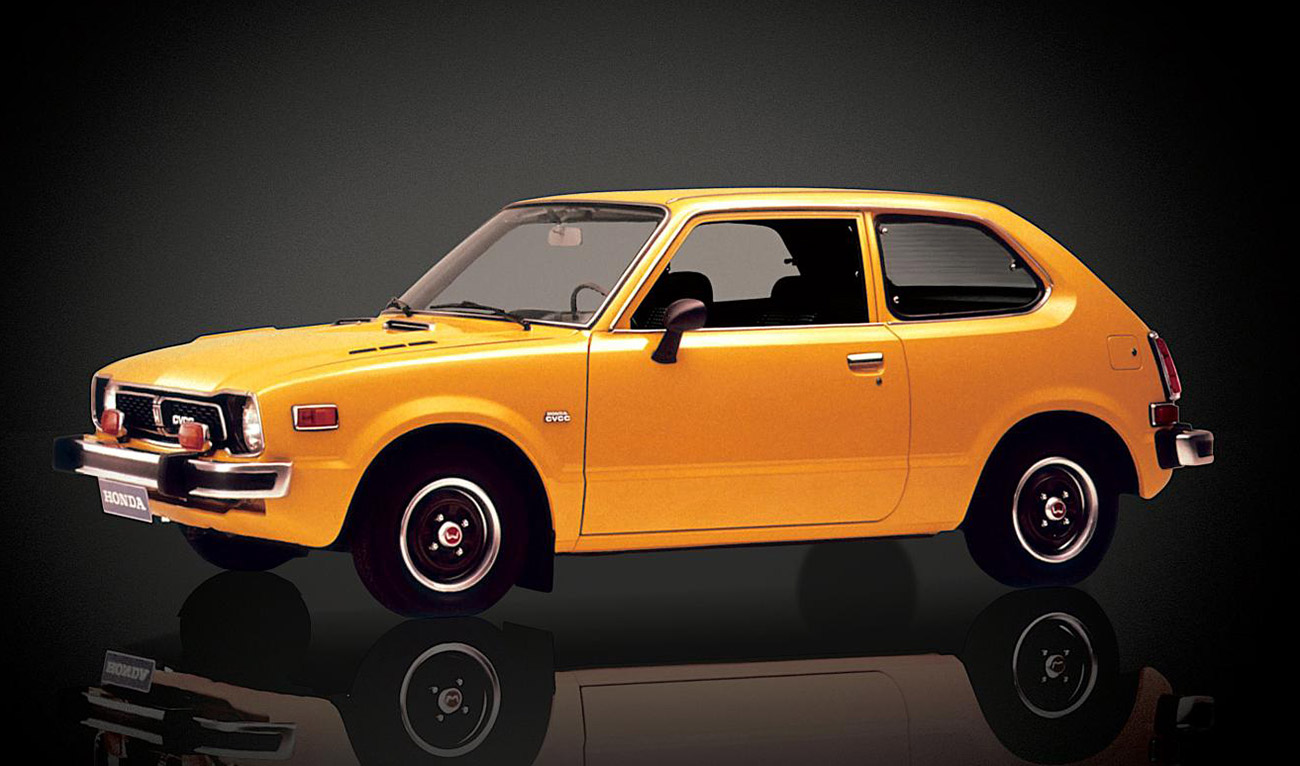
1975 Honda CVCC
The three-door 1973 Civic Hatchback rolled off the boat to a receptive American audience. It was the right car at the right time.
The first oil crisis (from Oct. 1973 to Mar. 1974) quadrupled the cost of oil. Gasoline prices followed suit.
While the 1973 Civic’s 1200cc engine produced a scant 50 horsepower and 59 pound-feet of torque, it delivered admirable fuel economy figures. Car and Driver saw as much as 33 miles per gallon, with a 0-60 mph time of 12.9 seconds. The five-door station wagon arrived in 1974.
The Civic had the right price: a starting MSRP of $1,450 for the base model.
The five-door 1500cc CVCC engine arrived on our shores in 1975. In an industry first, the CVCC could efficiently run either leaded or unleaded fuel without a catalytic converter.
When gas prices doubled during the second oil crisis in 1979, the Civic was, once again, well-positioned. Savvy commuters had a legitimate way to minimize visits to the pump.
By the end of its first-gen run, the Civic had gained a foothold on American roadways.
Second-Generation Civic (1980-1983)
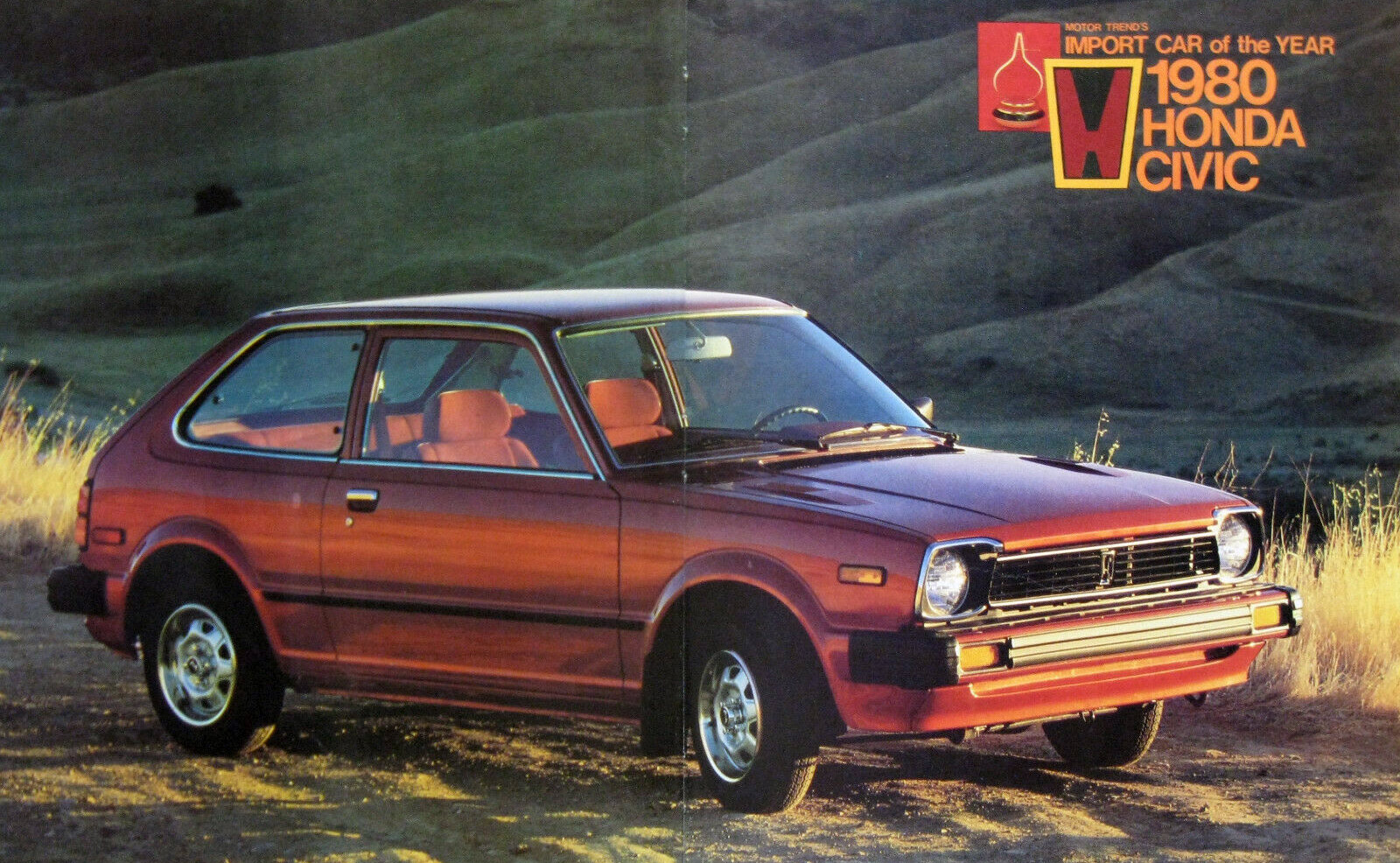
Motor Trend named the 1980 Civic as “import car of the year.”
The second-gen Civic grew a bit wider while adding sharper body lines. It also benefited from revised suspension and braking systems.
At the same time, the Civic lineup expanded. With the arrival of the 1980s, a four-door sedan and a five-door hatchback joined the Civic family.
Power output was still paltry by today’s standards. The base 1300cc CVCC engine produced a mere 55 horsepower. The optional CVCC 1500cc engine delivered a whopping 67 ponies.
The Volkswagen Rabbit proved to be the second-generation Civic’s primary competition. Road and Track Magazine gave the 1980 Civic a glowing review, with stats to prove the point. R&T testing showed the Civic GL1500 edging out the Rabbit on 0-60 mph time (12 seconds flat vs. 12.1).
Most importantly, the second-gen Civic’s fuel economy at 27.5 mpg sipped fuel slower than the 25-mpg Rabbit. Moreover, the Civic was slightly less expensive, with a base price of only $4,849—and the entry-level Civic 1300 starting at $3,699.
Third-Generation Civic (1984-1987)
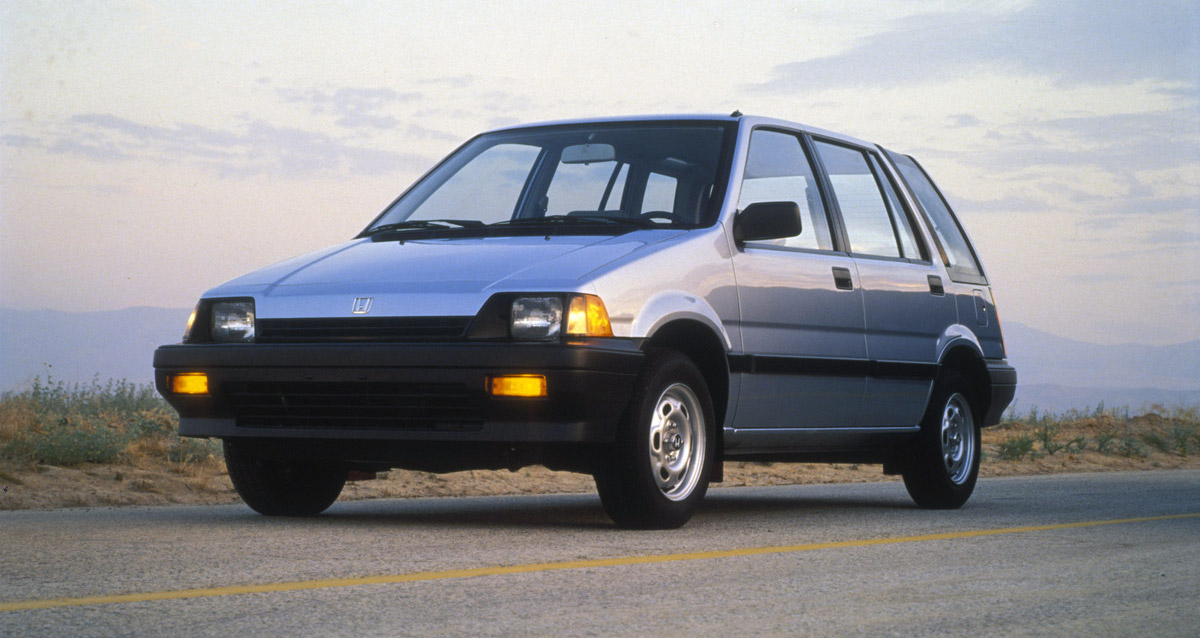
1985 Civic Wagon
The succession of Honda Civic generations continued with a leap forward in design. The new Civic featured a smoother front fascia and an extended roof on the hatchback.
Two variants achieved legendary status: the five-door wagon and the two-door CRX.
The boxy new wagon—known as the Wagovan in the United States—replaced the first-gen wagon and five-door hatchback.
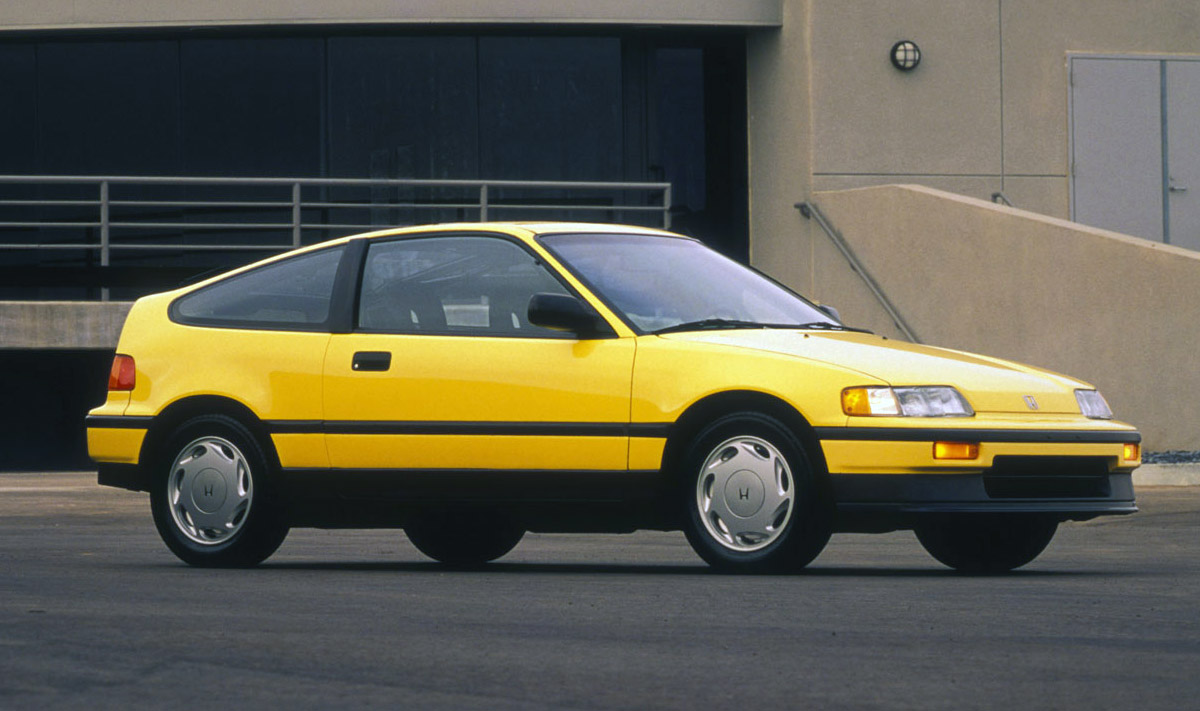
Honda CRX
The Wagovan was initially only offered with front-wheel drive. A push-button four-wheel-drive option followed in 1985. (A revised real-time 4WD system arrived in 1987.)
Fuel economy was still at the forefront. The new two-door CRX led the lineup with a one-two punch of stunning efficiency and a sporting nature.
The US EPA rated the base manual 60-hp 1300cc CRX at 51 miles per gallon in the city and an astounding 67 mpg on highways. The 76-hp CRX 1.5 tipped the scales at a lithe 1,803 pounds.
The upgraded CRX Si arrived in 1985 with a $7,999 base price. It carried a new fuel-injected 1500cc engine delivering a relatively zippy 91 horsepower. The affordable sports car had arrived.
Car and Driver magazine nailed the speed tests with a 9.1 second 0-60 mph run—and the quarter-mile in 16.4 seconds at 81 mph. The CRX battled with the Mazda RX-7 and Pontiac Fiero. But the Civic was available at a fraction of the price.
Honda entered the hot hatch fray with the 1986 Civic Si hatchback when it gained the CRX Si’s perky PGM-FI engine.
Fourth-Generation Civic (1988-1991)
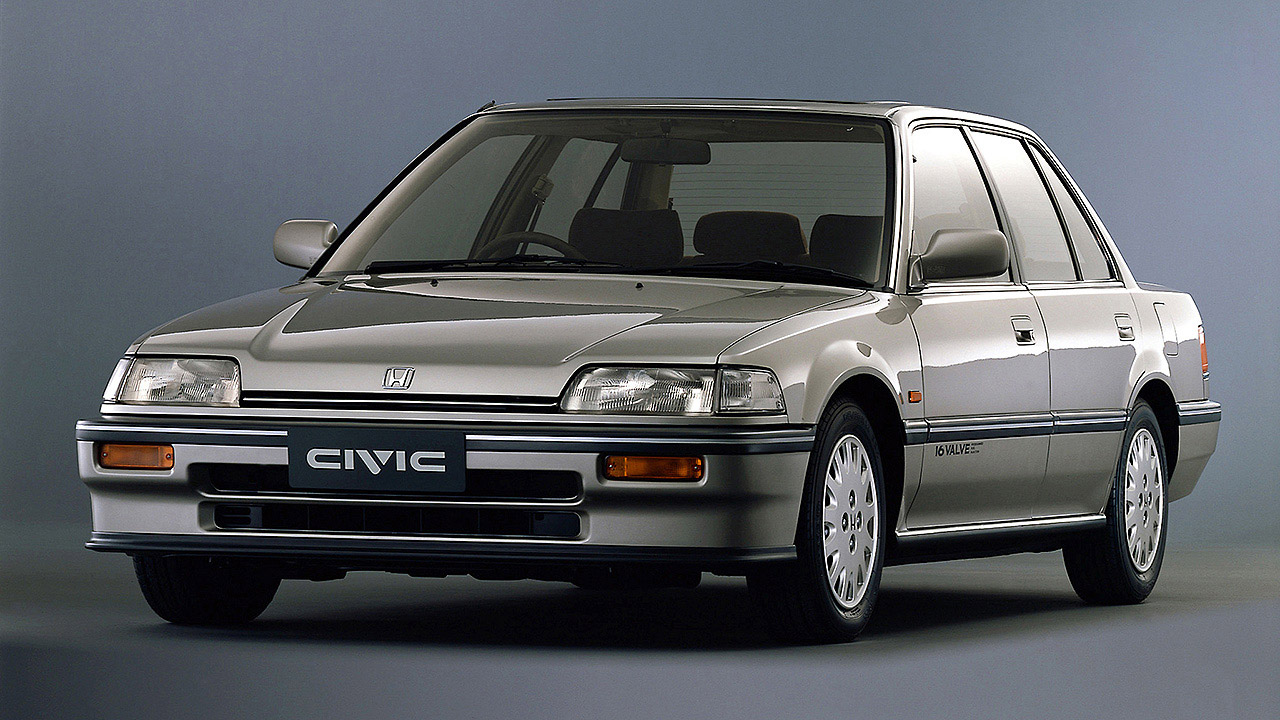
1988 Honda Civic LX Sedan
With the fourth of Honda Civic generations, the car’s vibe became less edgy. The looks evolved with a hood line that dipped and an expanded glass area. The new fully independent double-wishbone suspension system increased ride quality and handling.
These improvements did not sacrifice fuel economy, which remained at the forefront. The EPA initially rated the 1988 CRX HF at 57 mpg on the highway. (Testing procedures have become more stringent and accurate since then.)
Honda kept with the existing variants for this generation. The CRX Si and Civic Si are coveted today.
Power from the Si’s then-new 1.6-liter DOHC VTEC engine climbed to 105 hp in the CRX Si. The 0-60 mph time dipped into the mid-eights. The Civic Si (not offered in 1988) gained three additional ponies. These are among the most collectible Hondas of the Radwood era.
Fifth-Generation Civic (1992-1995)
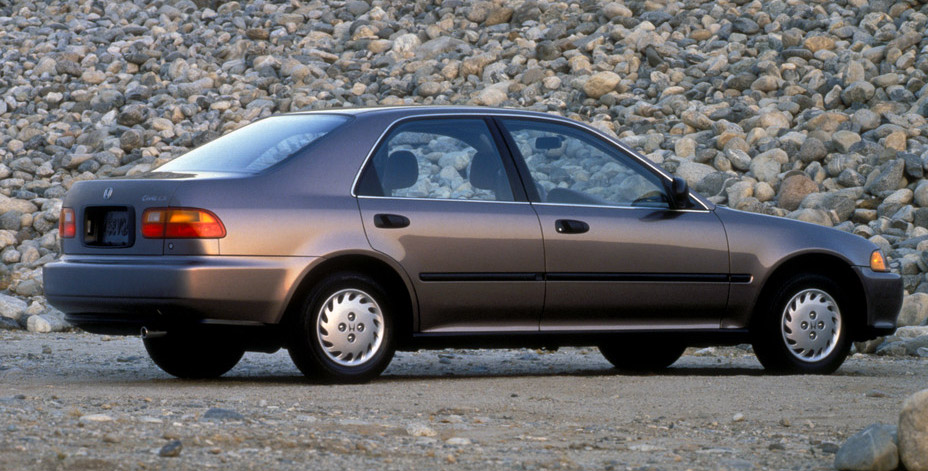
1992 Honda Civic LX Sedan
The fifth-generation brought the slickest and largest Civic yet.
A Civic Coupe was added to the lineup as the beloved CRX and Wagon sadly left the stage. The VX Hatchback became the mileage champ, with a new VTEC-E engine EPA-rated initially at 48 miles per gallon in the city and 55 MPG on the highway.
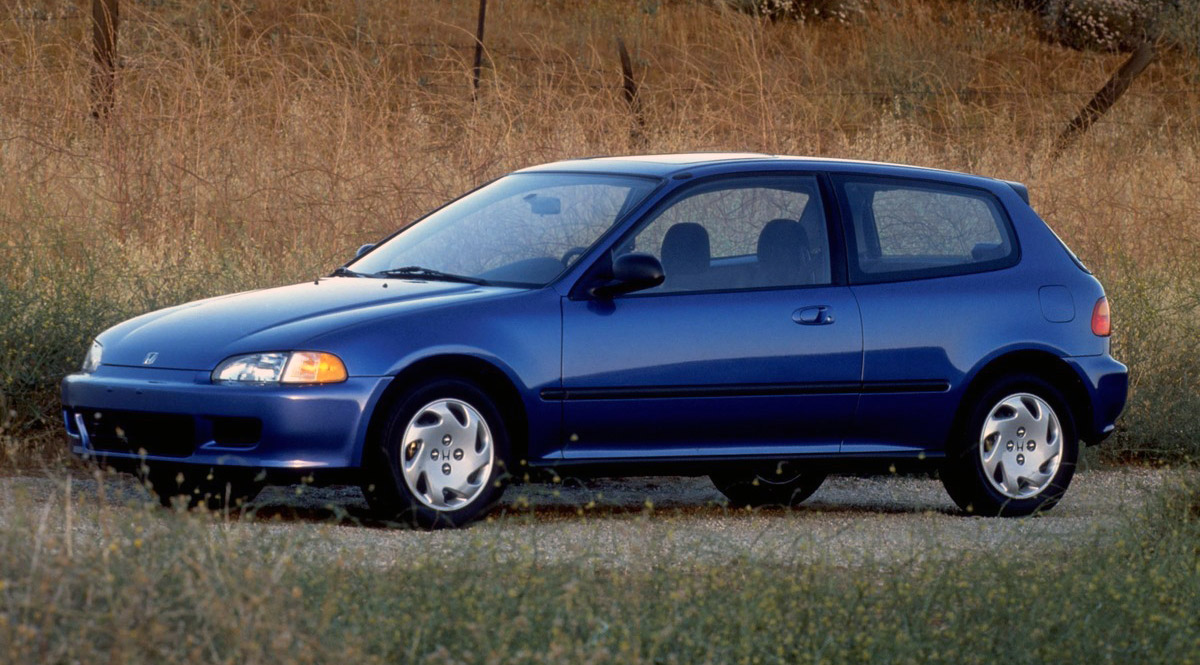
1992 Civic Si Hatchback
The little VX made mincemeat out of Volkswagen’s more expensive TDI diesels. Honda’s hot hatch also gained disc brakes and more horsepower. Car and Driver’s Civic Si tests resulted in a 7.5 second 0–60 mph run.
“The Fast and the Furious” marked the Civic’s Hollywood high-point. Noel Gugliemi drives a 1992 Civic Hatchback while a 1993 Civic Coupes trio gives chase in the infamous semi-truck hijack scene.
Sixth-Generation Civic (1996-2000)
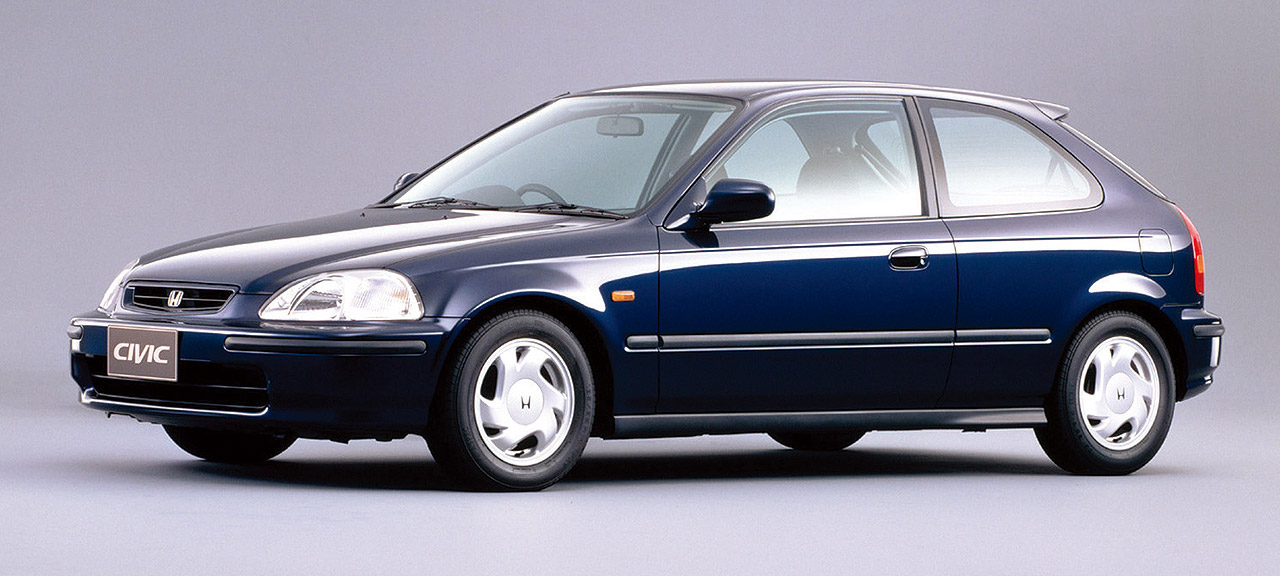
Honda Civic HX Coupe
The sixth-gen is arguably the most attractive Civic. It had subtle refinements over the previous Honda Civic generations. It took on a more futuristic aerodynamic form. The interior space became more flexible.
The VX left the lineup, handing its fuel-efficiency crown to the slick HX Coupe, which offered a five-speed manual or continuously variable transmission (CVT). Alt-fuel fans heralded the GX Sedan, Honda’s first natural gas-powered vehicle, exclusively sold to fleet buyers.
Tuners took heart in the appearance of the performance-oriented Si Coupe in 1999. The Si’s 1.6-liter DOHC VTEC inline-four pumped out 160 hp and 111 pound-feet of torque. Motor Trend’s test crew hit a 7.2 second 0-60 mph time and flew through the quarter-mile in 15.7 seconds at 88.4 mph.
Seventh-Generation (2001-2005)
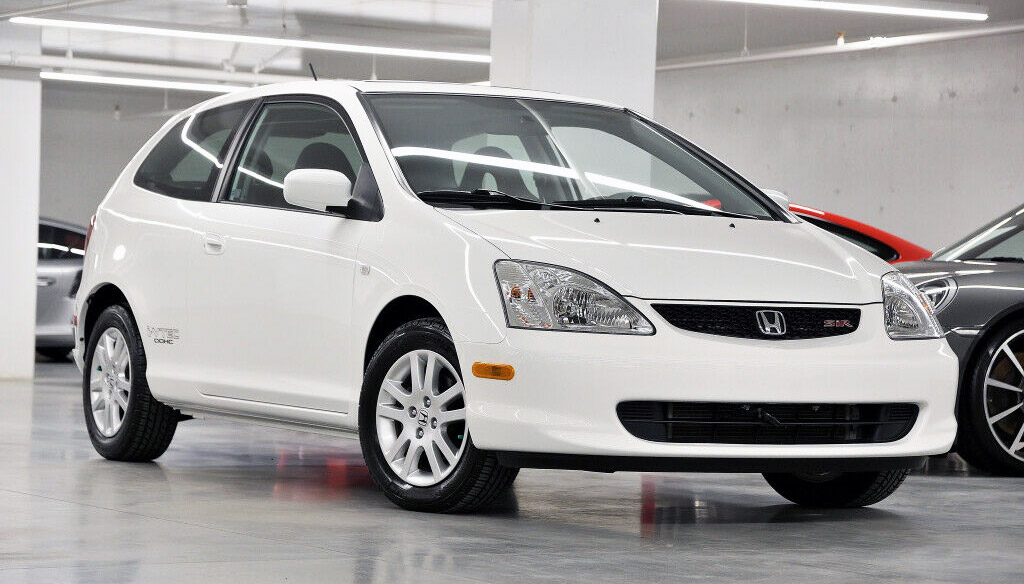
2003 Honda Civic Si
For the first time in the Civic’s lifetime, Honda’s design team arguably took a wrong turn. Stare at a sixth-gen Civic alongside a seventh-generation—and you’re likely to prefer the earlier model.
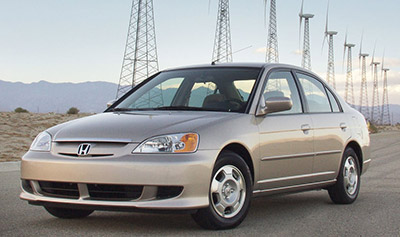
2003 Honda Civic Hybrid
The EPA classified the bloated seventh-generation Civic now as a compact car, even though the exterior dimensions matched the previous generation.
Honda achieved the feat with a new flat rear floor design that added interior space. The engineers also switched the Civic’s front suspension from the previous generation’s double-wishbone design to MacPherson struts. While this change made room for the K-series engine, handling was not as crisp as the previous generation.
The Si badge flipped from the coupe back to the hatchback, with a starting MSPR of $19,000 for the 2002 Si Hatch.
The Civic Hybrid sedan joined the lineup in 2003 to do battle with the Toyota Prius. The new gas-electric hybrid (following the Honda Insight) was the most aerodynamic Civic to date, with a 0.28 coefficient of drag.
Eighth-Generation Civic (2006-2011)
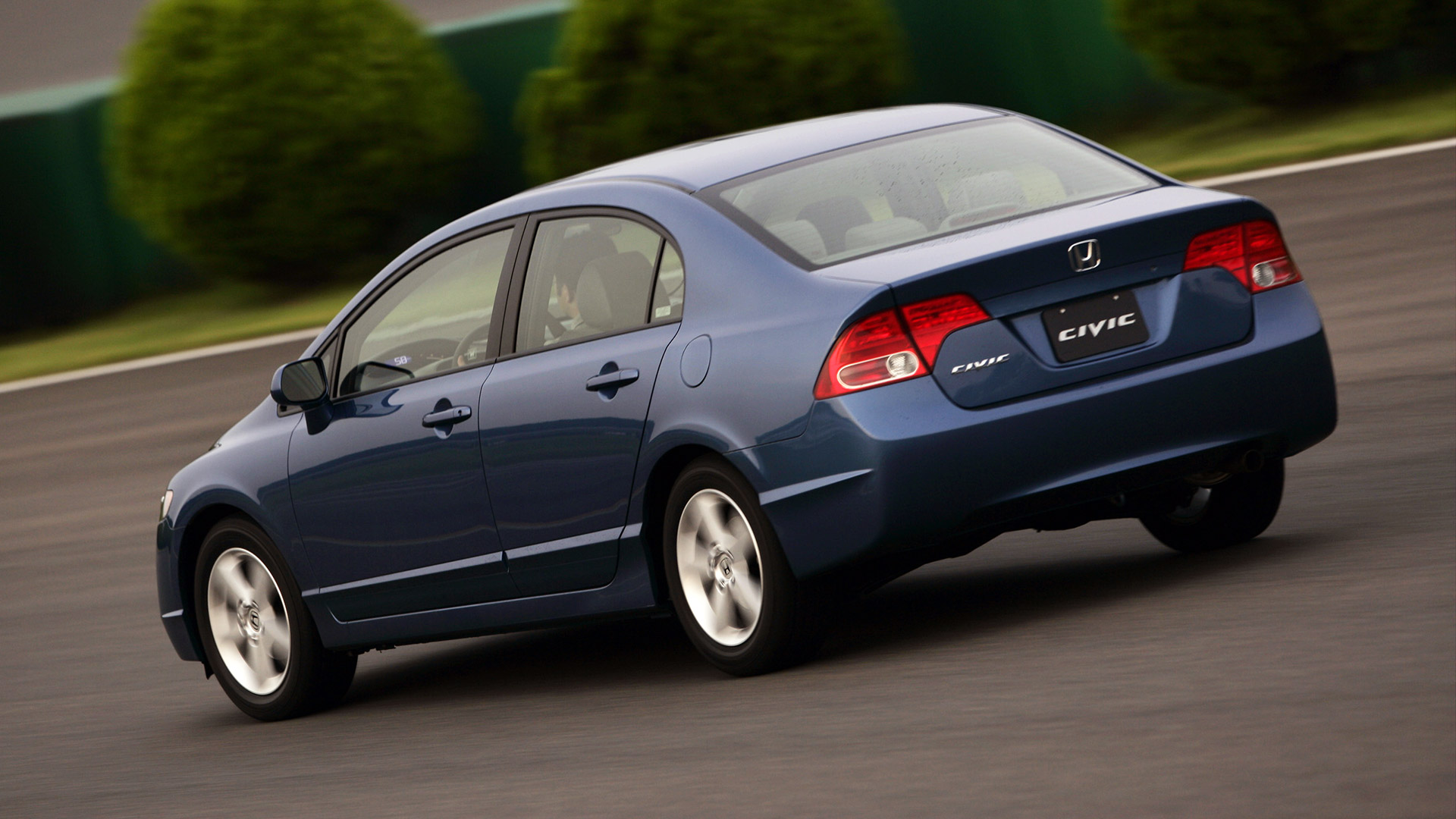
2008 Honda Civic Sedan
The eighth-generation Civic was marginally more attractive than the previous gen. It was still bland by earlier standards.
Honda disappointed some brand loyalists as the hatchback left the lineup. That left only the sedan and coupe, which were both offered in Si trim.
The Civic Si did not disappoint when it came to performance. With 197 hp and 139 pound-feet of torque, the Si’s 2.0-liter i-VTEC engine delivered a factory-rated 6.7 second 0-60 MPH time. The 2006 Si Coupe’s base MSRP was $20,540.
Ninth-Generation Civic (2012-2015)
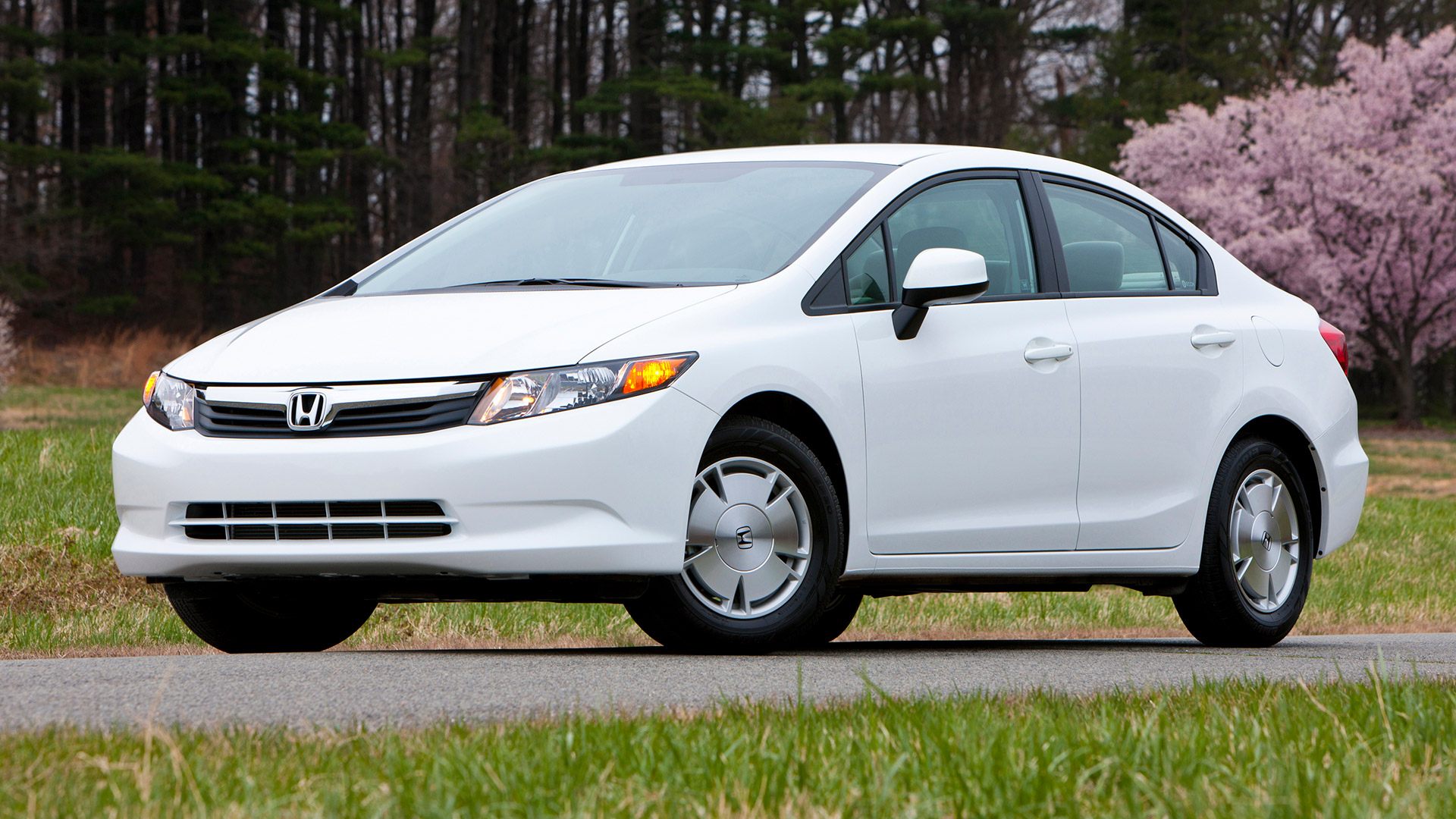
2012 Honda Civic HF
The Civic’s road to redemption began with the ninth generation’s sleek exterior redesign. The Si continued to be offered as both a sedan and coupe.
The fuel-efficiency focused Civic HF arrived, paying homage to the legendary CRX HF. The HF stands for “high efficiency.” It earned that status thanks to improved aerodynamics from belly pans and a rear decklid spoiler.
Honda claimed to deliver two additional miles per gallon on the highway in the HF, with a 41 MPG highway rating. In the city, EPA efficiency was 29 mpg. The Civic Hybrid was the model’s mileage champ—with 44 mpg combined.
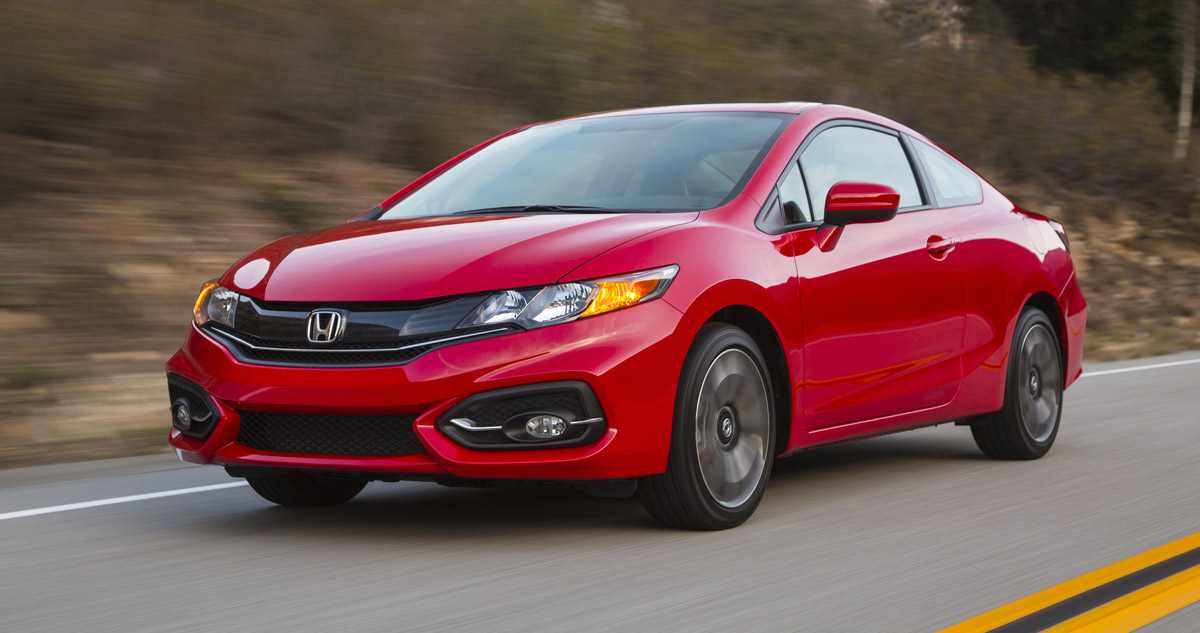
2014 Civic Coupe
Meanwhile, performance enthusiasts leaned towards the Civic Si, of course. The Si received a 2.4-liter i-VTEC producing 200 hp and 170 pound-feet of torque. In his Car and Driver review of the 2012 Civic Si, the late great Tony Swan lamented the previous Si’s higher-revving 2.0L engine’s departure while acknowledging the reasoning behind the switch.
C&D’s testing produced a 6.6 second 0-60 mph time and a standing quarter-mile of 15.0 second. Honda ECO Assist driver feedback technology found a home in all Civics, except for the Si.
Tenth-Generation Civic (2016-2021)
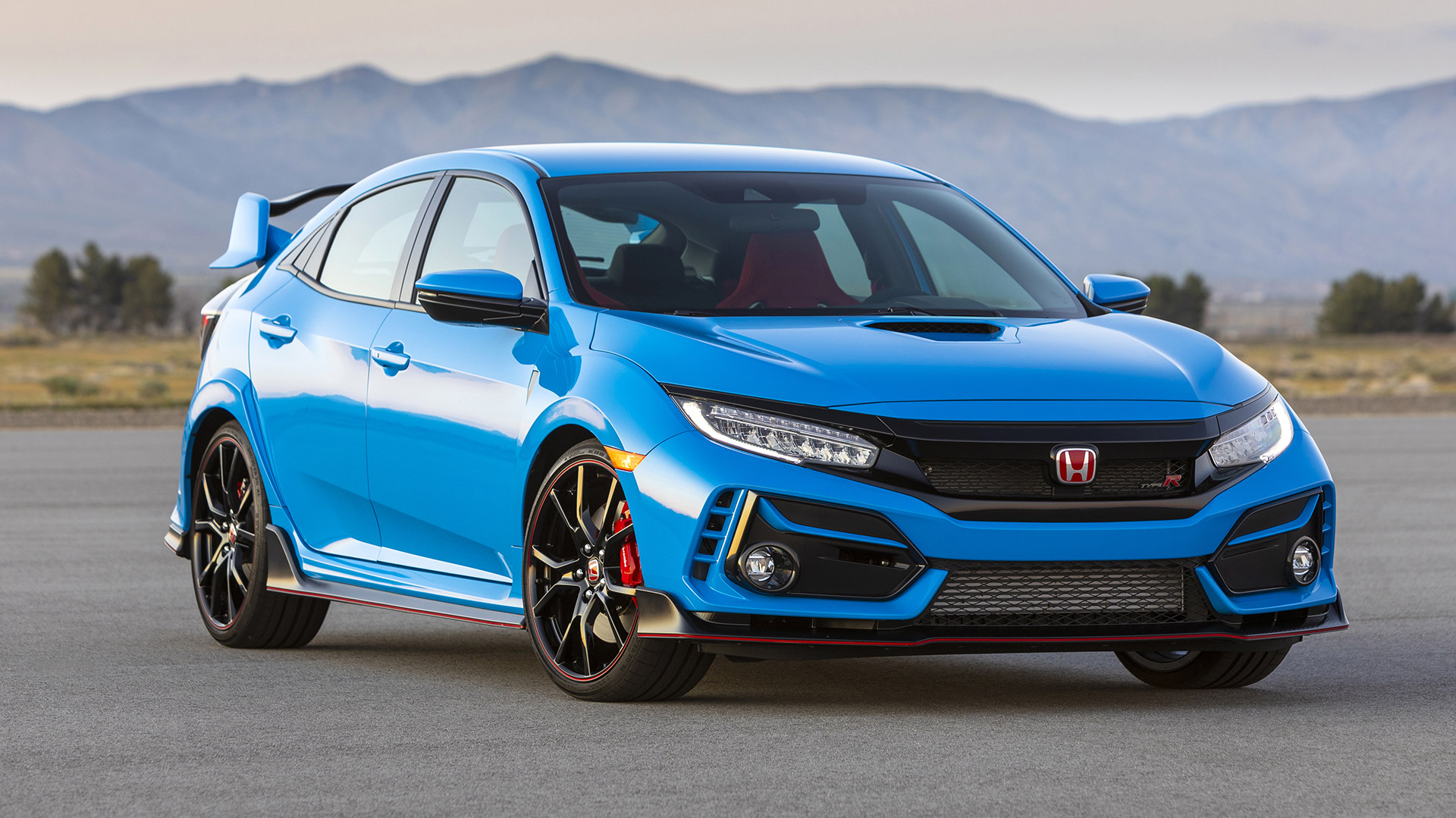
2020 Honda Civic Type R
With the tenth generation, the Civic’s exterior redesign took a big happy 180-degree turn into videogame land. And the hatchback returned to the fray. While many argue the exterior was too extreme, it is what it is.
Though it has issues, the Civic’s new 1.5-liter turbocharged engine won its share of fans. While the Si shares its 1.5L with the range, it’s tuned to produce 205 hp and 192 pound-feet of torque.
Car and Driver covered the 0-60 mph sprint in 6.3 seconds in the Civic Si, with a 14.8-second standing quarter mile. Cracking into the 14s in a stock Civic is quite a thing, especially when you consider the $24,775 base price.
And then there’s the Type R. It might not be a supercar for the masses, but holy cow, it sure is super. The Type R transforms the four-door hatchback Civic into a well-mannered track car for the street. It has a visual presence and everything between the fenders to back that up.
The aerodynamic pieces are there for a purpose. It’s not just good. It’s great. Motor Trend heralded the Type R as “best hot hatch in decades.” Honda’s sharpest launch produced a 0-60 mph time in 5.4 seconds, while MotorWeek ran a 14.1-second quarter mile. Of course, straight-line speed isn’t the Type R’s primary mission. For that, you need a twisty stretch of asphalt.
The 11th generation of the Honda Civic is due in 2022. Honda unveiled a prototype in Nov. 2020.
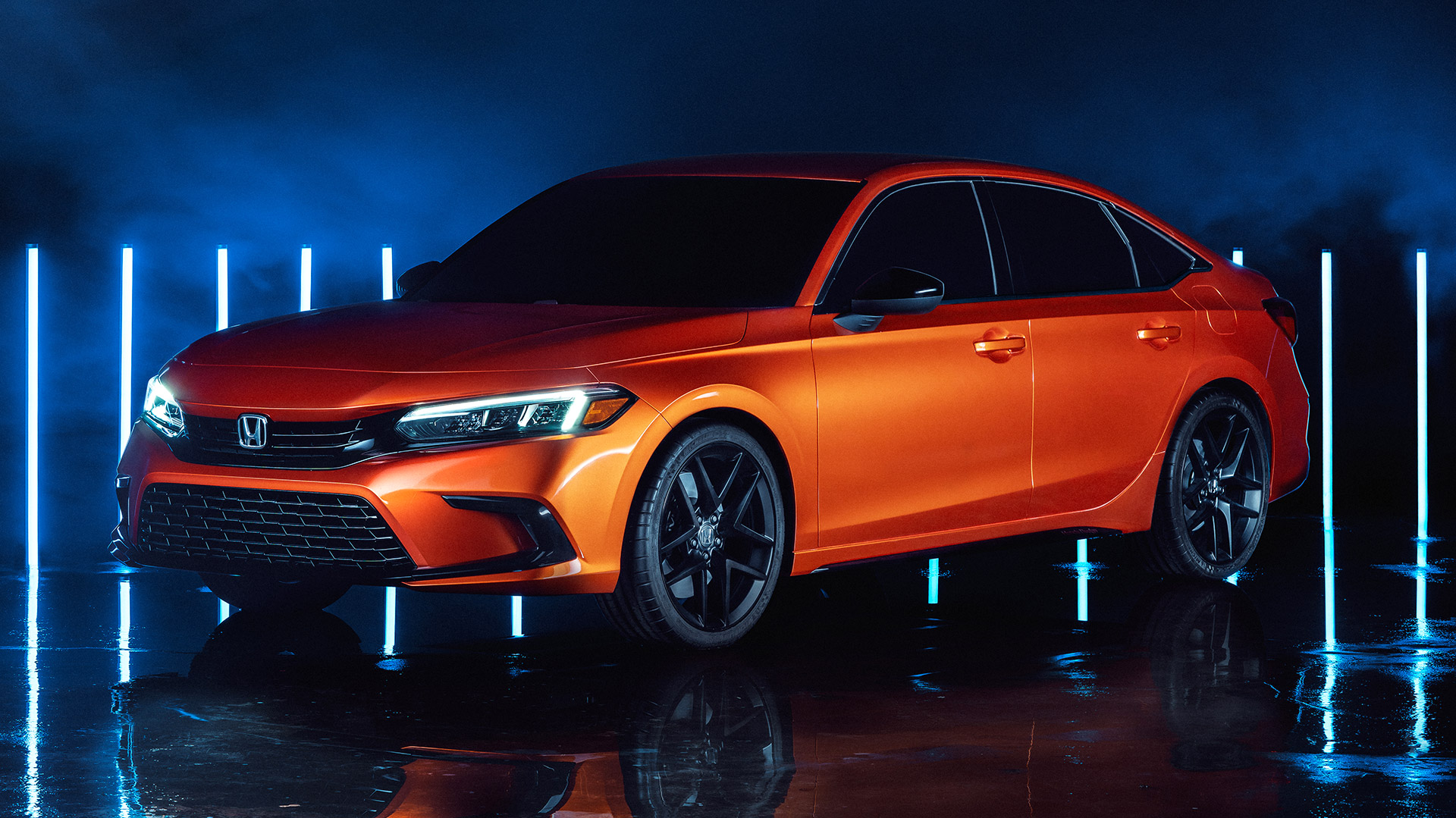
The concept version of the upcoming 11th-generation Civic
The company said that the upcoming model drew inspiration from the “timeless elements” of Honda design. That translates to a wide stance, low belt line, and an open and airy cabin. With a streamlined redesign, the Civic’s future looks bright.
Shop now for Honda Civics
See Honda Civic Cars for sale on eBay.

